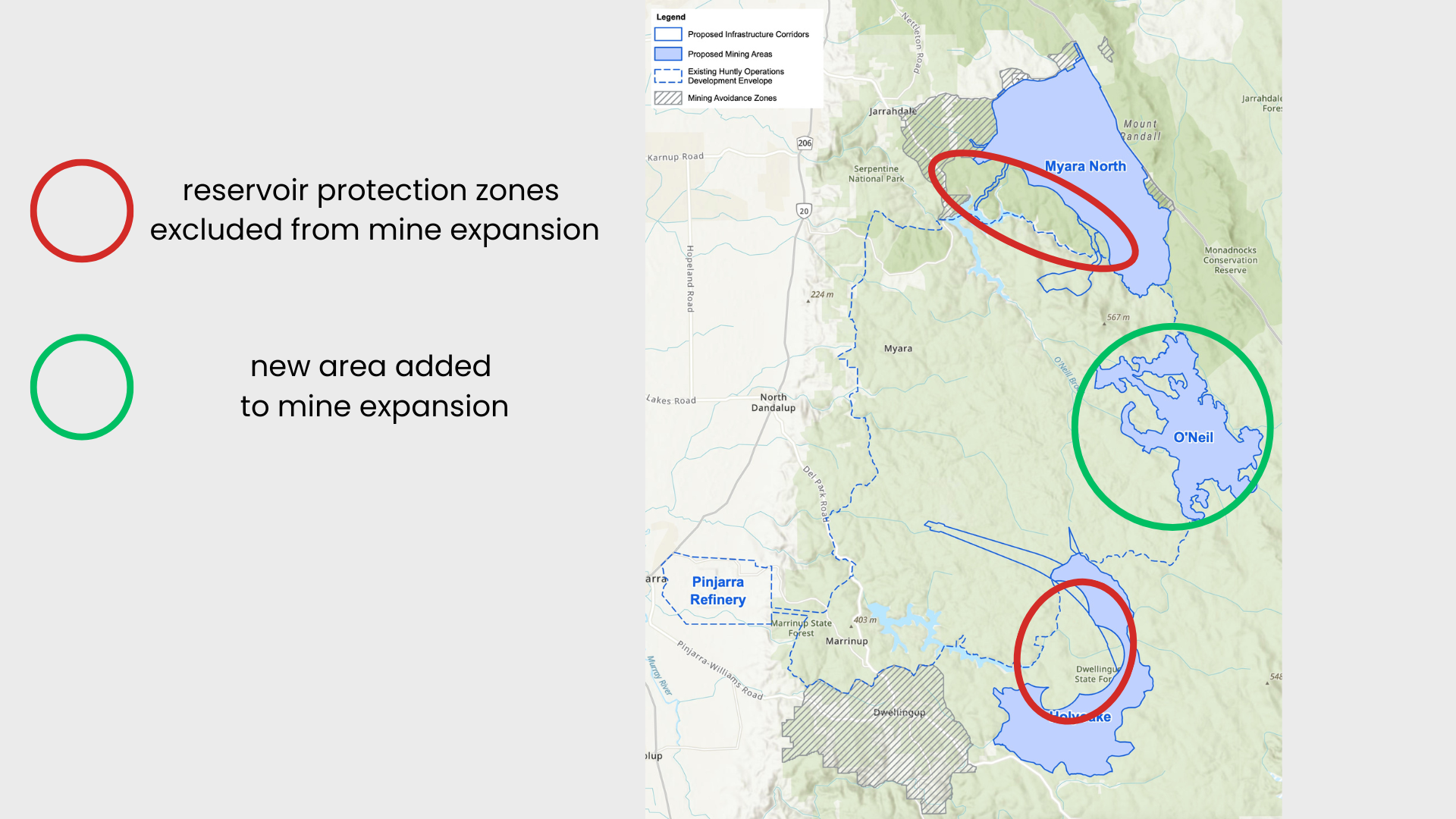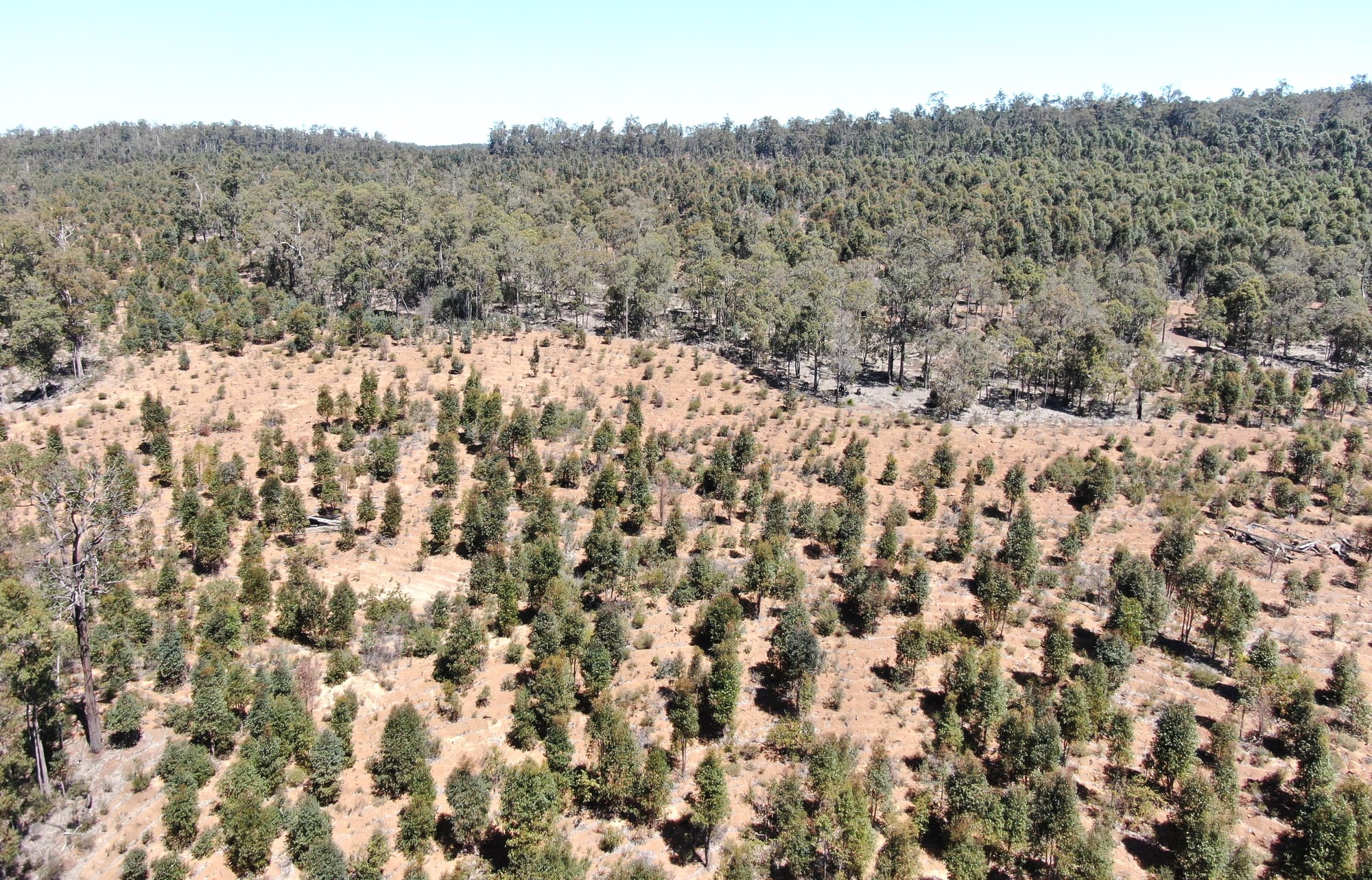Gas seeping to surface from Chevron's Barrow Island oil operation
The WA environment regulator is investigating unknown amounts of hydrocarbons rising to the surface on the Class A nature reserve.
Alcoa has made last minute changes to its planned expansion of mining in WA's jarrah forest and wants to reenter a previously mined area, potentially triggering a new major federal environmental assessment.

Alcoa has made last minute changes to its planned expansion of mining in WA's jarrah forest, deferring mining near two dams and applying to reenter a previously mined area that it deems of low risk to the Peel Harvey inlet on the coastal plain below.
The changes are a massive rejig of its long term plan to supply bauxite to its Pinjarra alumina refinery that has been in the WA environmental approval system for more than four years.
The US miner has deferred mining in reservoir protection zones around Serpentine and South Dandalup "as a result of a recent review" to reduce potential environmental impact, according to communication to stakeholders in October seen by Boiling Cold.

To maintain production the $18 billion company plans to revisit an area called O'Neill to the east that it has last mined in 2014. It told stakeholders the changes and other alteration to its plans would reduce the area of clearing of jarrah forest by about 800 hectares.
Reservoir Protection Zones are a two kilometer buffer from the top water level of a reservoir. To protect the water supply with few exceptions the public are not allowed to access the zones.
However Alcoa has been allowed to mine within a few hundred meters of the southern edge of Serpentine dam - the largest source of drinking water for Perth and the south west.
Alcoa's planned expansion of its sprawling Huntly mine involves extending mining to the north of Serpentine Dam in an area called Myara North and around South Dandalup dam at Holyoake.

Contamination of Perth''s water supply from Alcoa's mining was "considered certain" by a 2023 Water Corporation assessment that concluded "mining impacts are persistent and irreversible, with little evidence that mined areas can be effectively returned to an equivalent pre-mining state."
A separate assessment by the Department of Water and Environmental Regulation in 2023 opposed Alcoa's current mining "in its entirety" as there was a “foreseeable” risk that water from Serpentine Dam could become unusable.
The two reports obtained through freedom of information requests are appended below.
The Cook Labor government ignored both warnings and approved Alcoa's mining plan in December 2023.

WA Forest Alliance director Jess Boyce said Alcoa must permanently exclude, not just defer, its expansion into the precious forested water catchment areas that are off-limits to average Western Australian bushwalkers and campers.
"The pressing question to both the Cook Government and Alcoa is when will the forest-destroying bulldozers currently in the Reservoir Protection Zone be stopped," she said.
Alcoa was asked in what circumstances it would mine in the reservoir protection zones it has removed from its present plans. A response was not received before publication.
Alcoa stopped mining at O'Neill because "all economic ore has been extracted," according to its application to mine O'Neill submitted to the federal environment regulator a week ago.
"However, the region still contains remnant, viable ore deposits," it said.
In its federal submission Alcoa acknowledged that mining at O'Neill was in the regulated sub catchment of the Serpentine Dam and could have an indirect effect on the Peel Estuary inland of Mandurah.
The estuary is recognized as a wetland of international importance unfortunately the Ramsar Convention, so attracts particular attention under federal environment legislation.
Alcoa expected its mining would have "a negligible impact to either water quantity or quality of inflows to the Serpentine Dam and subsequently the Peel Inlet, therefore no tangible impact" to the Ramsar site due to its "preventative risk management processes including the construction and ongoing management of multiple barriers to prevent impacts to drinking water quality."
Past failures of these processes and barriers have been a major cause of the concerns of government agencies about Alcoa's mining.

If the federal government determines mining at O'Neill could have a significant impact on the estuary a more detailed and lengthy assessment process will be triggered.
Boyce said scientists were already warning that the Peel-Harvey estuary was "showing signs of trouble" and a claim that mining at O’Neil had unlikely indirect impacts must be cautiously assessed.
"We cannot accept the risk that the proposal poses to this internationally important and under-stress system," she said.
Alcoa was asked how it could state to the federal environment regulator that it had a high level of confidence its mining at O'Neill would not have a significant impact given the damning independent assessments of its operations by Water Corporation and DWER.
An Alcoa spokesman said it was not able to respond before publication.
All the info and a bit of comment on WA energy and climate every Friday